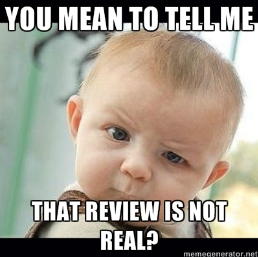
Attrition is costly. How costly is up for debate. Some research studies estimate that it costs $ 4,219 and takes 42 days to hire a new employee, which corresponds nearly identically to FurstPerson’s cost-of-attrition research that settled on $ 4,284 per lost employee. Others estimate that the total cost is a percent of the position salary, ranging from 16% to 20% for low-to-mid range paying jobs. In additional to tangible costs, lost employees can have other negative effects, such as increased workload for remaining employees, lost productivity, reduced engagement for the workforce, and an impact on the climate and culture of the company.
There are certain periods of time in the employee lifecycle when employees may be more susceptible to turnover. Understanding when and why these periods occur offers businesses a strategic leg up in the fight to attract and retain top talent. Here, we will outline three vulnerable periods, as well as provide suggestions on how to reduce turnover at each stage.
#1 Before an Employee Even Starts
There is a significant cost associated with no-shows: people who were hired and do not show up for the first, or subsequent, days of work. Time spent recruiting, assessing, and interviewing such employees is a real cost, and can be disheartening for everyone involved in the selection process.
No-show hires have become more common in recent years. With employment opportunities increasing, there is also an increasing probability that qualified candidates will receive other attractive offers after accepting a position. Or, they may second-guess their decision for a variety of reasons, from perceived fit to waning interest. Luckily, several steps can be taken to reduce no-show turnover.
- Select dependable and conscientious employees. Some people are more likely to be no-shows than others. Applicants who are conscientious and dependable are more likely to follow through with their obligations, such as accepting an offer with a company. Personality assessments can be used to assess these traits, as can targeted interview questions.
- Reduce the length of time between the offer and start date. Many organizations begin the hiring cycle well before a position needs to be filled. Employees report waiting as long as four months between being extended an offer and the first day of work. During this time, employees still have bills to pay and may have other job offers. By reducing this post-hire, pre-training time, these new employees will be less likely to be sidetracked by other organizations and obligations.
- Implement a consistent pre-boarding procedure. Pre-boarding is an activity that occurs between an applicant accepting a new job and their first day of work. It can involve a variety of activities, but the most important is to begin building a relationship with the soon-to-be employee. This can involve frequent contact from recruiters and future supervisors, an opportunity to meet future team members, and an early immersion into the culture of the company. Any activities that can keep a new employee excited and engaged will decrease the likelihood of no-shows.
#2 Immediately After Training
The period when employees move from training (or nesting) into the production environment is one where they are particularly at-risk for attrition. Moving out of the protected training environment can be a big transition, and oftentimes employees will feel underprepared or anxious about whether they can perform well in the job. They may also find that the job itself does not match their expectations. Employers can take several steps to ensure that employees understand the role, feel prepared, and are supported.
- Create formalized mentor programs. Mentoring programs can give employees constant support while they learn their job. Though informal mentoring often happens at work, a formal mentoring program can ensure that all new employees receive a consistent experience. A volunteer-based mentorship program also gives employees a sense of value and accomplishment.
- Implement a realistic job preview (RJP). A RJP during the application process can help set appropriate expectations for what a job will actually entail. A RJP is a method to show applicants the realities of the job, including both benefits and challenges of a role. Effective RJPs provide insight in to the work environment, the tasks performed by employees completing the job, and include testimonials about the work and culture.
- Level-set training with the job itself. Employees often report that their training does not accurately mirror the job or does not provide them with enough “hands-on” opportunities. Wherever possible, design training to match the complexity of the job, giving employees an opportunity to work through complete, realistic tasks. Pay particular attention to work tasks and situations that may be challenging – for example, dealing with difficult customers or engaging in multi-tasking— and ensure these are incorporated in training. Conduct surveys or focus groups with current employees to learn what employees felt was missing from training and include these components in training.
#3 When Employees Begin to Master the Job
Over time, employees will reach a point where they master the primary tasks of a job and are fully proficient in their roles. Depending on the complexity of the role, this may take a good deal of time. Once the job becomes routine, employees may become less satisfied and less engaged in their job, perhaps even bored with the role, and they may seek other opportunities. The good news is that there are options for reducing the chances that these seasoned, effective employees will opt to depart.
- Developmental activities and ongoing training can keep an employee engaged. When employees have an opportunity to learn new skills, they remain engaged with their current job, particularly if mastering these skills can lead to further opportunities within the company. Provide opportunities for personal growth and development when possible.
- Career paths within the organization should be real, clear, and advertised to employees frequently. Quarterly and annual review meetings are a perfect place to discuss employees’ career goals and paths. Wherever possible, clear guidelines should be shared regarding opportunities for promotions to give employees specific goals, whether they be performance or development goals. Individuals who want to stay with the organization and advance should clearly understand how to do achieve these goals. It’s critical, however, to ensure that the career path is real and achievable. Otherwise, companies risk losing some of their best employees to good opportunities in competitors’ businesses.
(86)
Report Post





